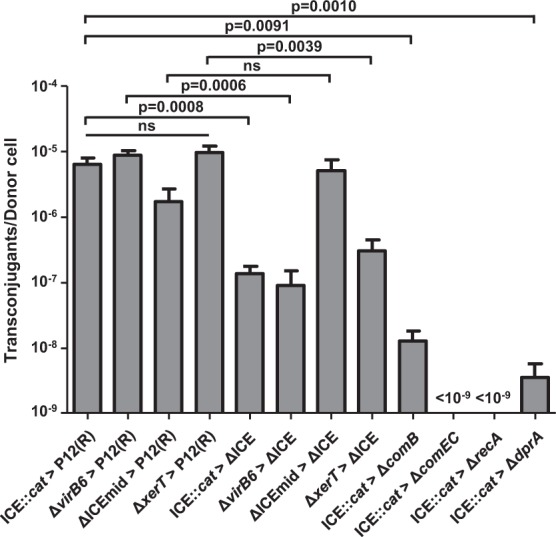Figure 2.

Transfer rates of ICEHptfs4 to ICE-positive and ICE-negative recipients. Mating experiments in the presence of DNase I were performed between the ICEHptfs4::cat donor strain (as shown in Fig. 1a; ICE::cat), or isogenic donor strains with complete deletions of the indicated genes, and either a kanamycin-resistant P12 wild-type strain (P12(R)), or an ICE-deficient P12 mutant (ΔICE) as recipients. The ΔICEmid donor strain has a deletion of genes hpp12_438 to hpp12_469 (see Fig. S1). Likewise, isogenic mutants in genes encoding DNA uptake factors (ΔcomB, ΔcomEC) or recombination proteins (ΔrecA, ΔdprA) were provided with a kanamycin resistance and used as recipient strains. Transfer rates are indicated as double-resistant clones per viable donor cell; no clones were obtained with ΔcomEC and ΔrecA recipients. Viability of recipient cells was confirmed by plating co-cultivated bacteria in serial dilutions on kanamycin-containing media. All data shown are mean values of at least five independent experiments with standard errors of the mean (number of experiments from left to right: n = 16, 9, 7, 5, 14, 6, 5, 6, 7, 13, 9 and 13); individual p values are indicated above the bars; ns, no significant difference.
